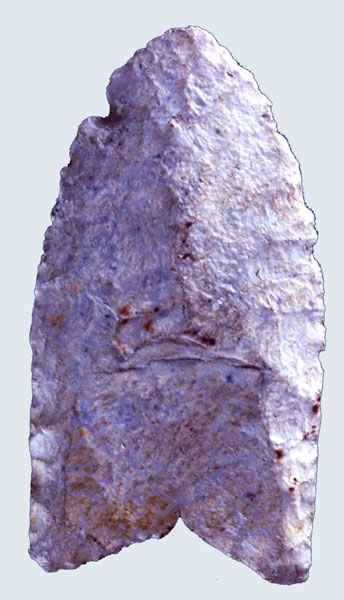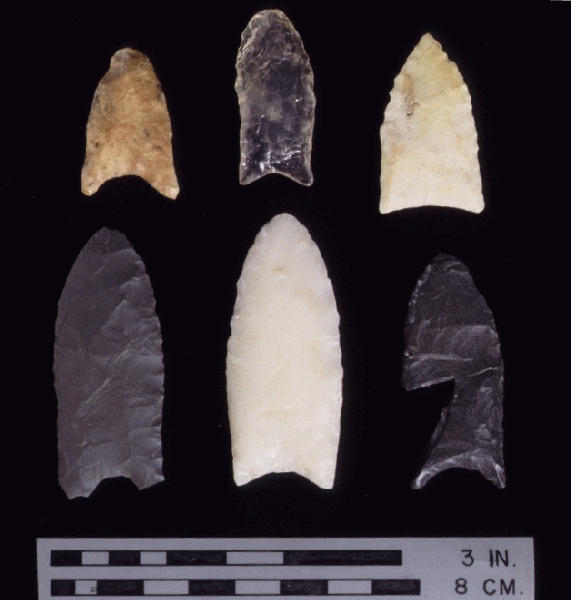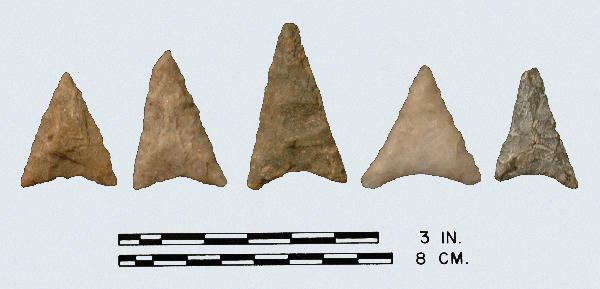
Clovis: chert

Clovis: 44SX0202, Nottoway River Survey, Lithic Casting Laboratory, replicas. Top Row: chert, clear quartz, chert; Bottom Row: rhyolite, quartz, chert.
Type Lanceolate Paleo-Indian
Defining Attributes
The Clovis is a medium to large size, narrow, fluted, lanceolate point with a concave base. Some Clovis points show a slight narrowing at the base of the blade edges, while others have entirely straight sides.
Chronology
The Clovis point dates to the Paleo-Indian period, 9200 to 8800 BCE. In Sussex County, Virginia McAvoy (1997) obtained a radiocarbon date of 8970 +/-250 BCE from a Clovis tool cluster and hearth at the Cactus Hill Site. Recent AMS dates and review of earlier C14 dates has reduced the time span of the Clovis point to 400 years.
Description
- Blade: Lanceolate with parallel or excurvate edges. Both faces (rarely only one) fluted
- Base: Concave, basal edges usually ground smooth.
- Size: Length ranges from 25 to 127 mm. Thickness ranges from 3 to 9 mm.
- Technique of manufacture: Soft percussion followed by pressure flaking; both faces (rarely only one) fluted with the channel scars extending for varying distances on either side from base to tip. Frequently more than one channel flake was struck off on each face.
Discussion
A range of Clovis sub-types, based on shape and temporal period, have been described across the United States. Clovis points with faunal associations (mammoth remains) have been found in the American Southwest and High Plains. East of the Mississippi River, fluted points have been recovered mostly as surface finds (without faunal associations) from Alabama to Vermont. In Dinwiddie County Virginia, ca. 200 fluted points have been found scattered over the surface at the Williamson Site (McAvoy 2003). Other notable sites in the East researched early in time include the Quad Site in Alabama, The Hardaway Site in North Carolina, the Shoop Site in Pennsylvania, the Bull Brook Site in Massachusetts, and the Reagan Site in Vermont (Wormington 1957).
Defined in Literature
This type was originally named for one of the most important Paleo-Indian sites, the Clovis Site in New Mexico. At the Clovis Site stone tools, projectile points, and polished bone artifacts were recovered in association with mammoth remains (Wormington 1957:48).
References



